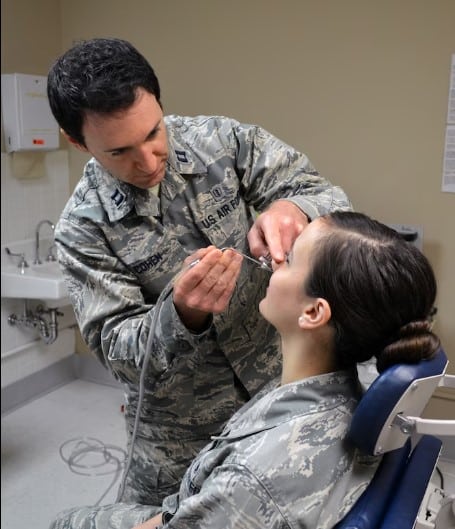Key Takeaways
- The cost of stomach liposuction varies widely based on factors like the surgeon’s experience, location, and the complexity of the procedure.
- Expect additional expenses such as anesthesia fees, facility costs, and post-operative care, which can add to the overall price.
- Investing in a highly experienced and reputable surgeon can enhance satisfaction and safety, despite higher initial costs.
- Understanding potential risks and the recovery process is crucial for setting realistic expectations and preparing adequately.
- Exploring non-surgical alternatives may offer cost-effective solutions with fewer risks and shorter recovery times.
- Assessing whether liposuction is worth the investment involves weighing personal goals, financial readiness, and potential outcomes.
Understanding Liposuction Basics
Liposuction Procedure
Liposuction is a surgical method. It involves removing fat from specific body parts. The primary goal is to improve body contour and proportion. Surgeons use small, thin tubes called cannulas. These tubes are inserted through tiny cuts in the skin. Fat is then suctioned out using a vacuum or syringe.
Tumescent Liposuction
Tumescent liposuction is the most common type. It uses a large amount of fluid injected into the fatty area. This fluid contains saline, lidocaine, and epinephrine. Lidocaine numbs the area while epinephrine reduces blood loss. The fluid makes it easier to remove fat with less pain and bruising.
SAL (Suction-Assisted Lipectomy)
SAL stands for Suction-Assisted Lipectomy. It’s another popular technique for liposuction procedures. In this method, surgeons use a vacuum-like device to suck out the fat. This technique requires precise movements by the surgeon. It can be used on various body parts like the stomach, thighs, and arms.
VASERlipo
VASERlipo is an advanced form of liposuction that uses ultrasound technology. VASER stands for Vibration Amplification of Sound Energy at Resonance. This technique breaks down fat cells before removal, making them easier to extract. It’s less invasive than traditional methods and helps preserve surrounding tissues.
Cosmetic Procedure Costs
Liposuction is an elective cosmetic procedure, which means it’s not medically necessary. Insurance companies typically do not cover these costs because it’s considered optional surgery. Prices can vary widely depending on factors like location and surgeon expertise.
Factors Influencing Cost
Several factors influence the cost of liposuction:
- Geographical Location: Prices vary from city to city.
- Surgeon’s Experience: More experienced surgeons may charge higher fees.
- Type of Technique Used: Advanced techniques like VASERlipo can be more expensive.
- Area Treated: Larger areas may require more time and resources.
Factors Influencing Stomach Liposuction Cost
Technique Choice
The choice of technique significantly affects the stomach liposuction cost. Tumescent liposuction involves injecting a solution into the fat before removal. This method is often less expensive due to its simplicity.
Suction-assisted liposuction (SAL) uses a vacuum-like device. It costs more than tumescent because it’s more invasive and requires specialized equipment.
VASERlipo uses ultrasound technology to break down fat cells. It’s the most expensive option due to advanced technology and precision.
Treatment Area Size
The size of the treatment area impacts plastic surgery costs. Larger areas like the stomach require more time and effort, increasing the overall price.
Smaller areas like arms or thighs are less costly. The stomach’s larger surface area means more fat removal, which takes longer and needs more resources.
Combining Procedures
Combining liposuction with other procedures can change cosmetic surgery pricing. Adding procedures like tummy tucks or body lifts increases the total cost.
It’s common to combine treatments for better results. However, this leads to higher fees due to additional surgical time and complexity.
Breakdown of Liposuction Price
Starting Costs
Liposuction costs vary by clinic. At the Advanced Plastic Surgery Institute, prices range from $3,500 to $4,500 per area. This is a common starting point for many procedures. The cost depends on the area treated and the complexity involved.
VASERlipo Technology
VASERlipo uses advanced technology. This often results in a higher price point. It uses ultrasound waves to break down fat cells. This method is more precise and less invasive. Patients may pay more for these benefits.
Anesthesia Type
The type of anesthesia used affects liposuction procedure cost. General anesthesia is more expensive than local anesthesia. General anesthesia requires an anesthesiologist, adding to the final bill.
Postoperative Care
Postoperative care also contributes to the overall cost. This includes follow-up visits and medications. Compression garments are often needed after surgery. These additional costs can add up quickly.
Extra Expenses to Consider
Facility Fees
Liposuction involves more than just the surgeon’s fee. Facility fees are a significant part of the procedure costs. These fees cover the use of the surgical center or hospital. They can range from $500 to $2,000 depending on the location and facility quality.
Anesthesia Costs
Anesthesia is crucial for comfort during liposuction. The cost varies based on the type used and duration needed. Local anesthesia might cost less, but general anesthesia can add $600 to $1,200 to the total bill.
Post-Surgery Garments
After liposuction, patients need special garments for support and healing. These garments help reduce swelling and improve results. They typically cost between $50 and $200 each.
Medication Costs
Medication is necessary for pain relief and infection prevention post-surgery. Antibiotics, painkillers, and other prescriptions can add up quickly. Expect to spend an additional $100 to $300 on medications.
Follow-up Visits
Follow-up visits are essential for monitoring recovery. Surgeons usually schedule several visits after surgery. Each visit can cost around $100 to $200 if not included in the initial package.
Potential Complications
Complications, though rare, can increase costs significantly. Issues like infections or poor wound healing may require additional treatments or even another surgery. It’s wise to budget extra funds for unforeseen complications.
Long-term Maintenance Costs
Liposuction results need maintenance over time. Regular exercise and a healthy diet are crucial but might not be enough for everyone. Some people opt for touch-up procedures every few years, which adds to long-term costs.
Evaluating Surgeon’s Experience and Location
Surgeon’s Expertise
A surgeon’s expertise is crucial in determining the cost of liposuction. Experienced plastic surgeons often charge more due to their skills and success rates. Surgeons with extensive training and years of practice provide better results. They have fewer complications during and after the procedure.
Researching a surgeon’s background is important. Look for board certification and specialized training in liposuction. Check if they are members of reputable organizations like the American Society of Plastic Surgeons (ASPS). These credentials ensure that the surgeon adheres to high standards.

Geographic Location
Geographic location significantly influences liposuction costs. Prices vary from city to city and country to country. In major metropolitan areas, prices tend to be higher due to increased demand and living costs.
For instance, liposuction in New York City or Los Angeles may cost double compared to smaller towns. This difference is due to higher overhead expenses like rent and staff salaries. Patients should consider travel costs if opting for surgery in a different location.
Average Surgeon Price
The average price for a skilled surgeon varies widely. On average, it ranges from $3,000 to $8,000 per procedure. This estimate includes anesthesia fees but not other associated costs like post-surgery care or follow-up visits.
Different factors affect these prices:
- The complexity of the procedure
- The amount of fat being removed
- The surgeon’s reputation
Anesthesia Fees
Anesthesia fees add another layer to the total cost. These fees depend on the type of anesthesia used and its duration during surgery. General anesthesia usually costs more than local anesthesia because it requires an anesthesiologist’s presence throughout the procedure.
Patients should ask for detailed quotes, including all potential anesthesia charges before committing to surgery.
Research Past Results
Reviewing a surgeon’s past liposuction results is essential. Look at before-and-after photos on their website or during consultations. This visual evidence provides insight into what you can expect from your own procedure.
Patient reviews are equally important. Read testimonials on independent review websites or forums dedicated to cosmetic surgery discussions. Positive feedback about successful outcomes and minimal complications adds confidence in choosing that particular surgeon.
Satisfaction Beyond the Fee
Qualified Surgeon
Choosing a qualified surgeon is crucial. It ensures safety and better results. A lower fee might seem appealing, but it can compromise quality. Experienced surgeons have extensive training and certifications.
They use advanced techniques and equipment. This leads to better outcomes and fewer complications. Patients should prioritize expertise over cost.
Patient Testimonials
Many patients share positive experiences after surgery. Sarah, a 35-year-old mother, opted for a reputable clinic. She was initially concerned about the anesthesia fee. However, her results were outstanding.
She felt more confident and happier with her appearance. Another patient, John, chose an experienced surgeon despite higher costs. His recovery was smooth, and he achieved his desired look.
Psychological Benefits
Liposuction offers psychological benefits too. Many patients feel more confident post-surgery. They experience improved self-esteem and body image.
These changes can positively impact their daily lives. Investing in quality care can lead to lasting emotional satisfaction.
Physical Benefits
The physical benefits are also significant. Liposuction removes stubborn fat that diet and exercise can’t eliminate. Patients often see immediate improvements in their body contours.
This can motivate them to maintain a healthier lifestyle. Choosing a skilled surgeon ensures these benefits are maximized without unnecessary risks.
Comprehensive Costs
It’s essential to understand all costs involved. The total fee includes several components:
- Surgeon’s fee
- Anesthesia fee
- Office fees
- Post-operative care
Each of these elements contributes to the final result’s quality and safety.
Risks and Recovery Challenges
Common Risks
Stomach liposuction has several common risks. Infection is one of the primary concerns. If bacteria enter the wound, it can cause serious issues. Another risk is uneven results. Fat removal may not be uniform, leading to an asymmetrical appearance.
Bruising and swelling are also typical. These can last for weeks or even months. Numbness in the treated area might occur too. While usually temporary, it can persist longer in some cases.
Recovery Timeline
Recovering from stomach liposuction takes time. Initial recovery lasts about one to two weeks. During this period, you need plenty of rest. Swelling and bruising are most intense during these first days.
After two weeks, many people return to light activities. Full recovery can take up to six months. During this time, avoid strenuous exercise and heavy lifting.
The recovery process impacts daily life significantly:
- Time off work
- Limited physical activity
- Possible follow-up appointments
These factors can also affect finances due to potential loss of income.
Postoperative Care
Following postoperative care instructions is crucial for a smooth recovery. Doctors provide specific guidelines tailored to individual needs. Adhering strictly to these instructions minimizes complications.
Key steps in postoperative care include:
- Keeping the incision area clean.
- Wearing compression garments as advised.
- Avoiding smoking and alcohol.
- Taking prescribed medications on schedule.
Ignoring these steps increases the risk of infection and poor healing outcomes.
Exploring Liposuction Alternatives
Non-Surgical Methods
Non-surgical fat reduction methods offer alternatives to traditional liposuction. These techniques aim to reduce fat without surgery. One popular method is CoolSculpting. It uses controlled cooling to freeze and destroy fat cells.
Another option is laser lipolysis. This technique uses laser energy to break down fat cells. Both methods are less invasive than classic liposuction surgery.
Cost Comparison
The cost of non-surgical treatments varies. CoolSculpting can range from $2,000 to $4,000 per session. Laser lipolysis costs between $1,500 and $3,000 per treatment area.
Traditional liposuction can cost between $3,000 and $7,500 for the stomach area. Non-surgical options might be cheaper initially but may require multiple sessions for desired results.
Risks and Side Effects
Non-surgical methods have fewer risks compared to classic liposuction surgery. CoolSculpting may cause temporary redness or numbness at the treatment site.
Laser lipolysis may result in mild swelling or bruising. These side effects are generally short-lived. Traditional liposuction carries higher risks such as infection or anesthesia complications.
Recovery Time
Recovery time for non-surgical procedures is shorter than for stomach liposuction. Patients can return to normal activities almost immediately after CoolSculpting or laser lipolysis.
In contrast, recovery from traditional liposuction can take several weeks. Patients often experience pain and swelling during this period.
Suitability of Alternatives
Certain situations make non-surgical methods more suitable than traditional liposuction treatments. People with minor fat deposits might benefit more from CoolSculpting or laser lipolysis.
Those who cannot afford long recovery times should consider these alternatives too. However, individuals with larger fat accumulations might still need classical liposuction procedures for effective results.
Is Liposuction Worth the Investment
Long-term Benefits
Liposuction offers long-term benefits that can outweigh its upfront costs. Many patients experience significant and lasting improvements in body contour. The results often last for years if a healthy lifestyle is maintained. Unlike non-surgical methods, liposuction removes fat cells permanently. This means the treated areas are less likely to regain fat.
Patients report high satisfaction with their results. A study from the American Society of Plastic Surgeons found that 80% of patients were happy with their outcomes five years post-surgery. This demonstrates the durability of liposuction results over time.
Quality of Life Improvement
Liposuction can improve quality of life in several ways. First, it can boost self-confidence by enhancing physical appearance. Many individuals feel more comfortable in their skin after surgery. They may also find it easier to wear certain clothes or participate in activities they previously avoided.
Second, liposuction can alleviate physical discomfort caused by excess fat deposits. For example, removing fat from the stomach area can reduce strain on the back and improve posture. Patients often report feeling lighter and more energetic after recovery.
Cost vs. Results
The cost of liposuction varies based on several factors:
- The surgeon’s experience
- The location of the clinic
- The specific areas being treated
On average, stomach liposuction costs between $3,000 and $7,000 in the United States. While this is a significant investment, many people find the long-lasting results justify the price.
Consider that non-surgical alternatives may require multiple sessions with temporary effects. These can add up over time and may not provide the same level of satisfaction as surgical options.
Personal Goals and Health Conditions
Before deciding on liposuction, consider personal goals and health conditions carefully. Liposuction is not a weight-loss solution but a body-contouring procedure. Ideal candidates are those near their target weight but have stubborn fat pockets.
Consulting with a qualified plastic surgeon is crucial. They will assess your health status and discuss realistic expectations for your results. People with certain medical conditions or those who smoke may face higher risks during surgery.
Closing Thoughts
Liposuction can be a game-changer for those seeking a sculpted stomach. Understanding the costs, risks, and benefits helps you make an informed decision. We’ve broken down the expenses, highlighted potential pitfalls, and explored alternatives to ensure you have all the info needed.
Ready to take the next step? Consult with a qualified surgeon to see if liposuction is right for you. Your journey to a more confident self starts now. Don’t wait—invest in yourself today!
Frequently Asked Questions
What is the average cost of stomach liposuction?
The average cost of stomach liposuction ranges from $3,000 to $7,500. Prices vary based on location and surgeon expertise.
What factors affect the cost of stomach liposuction?
Key factors include the surgeon’s experience, geographic location, and the complexity of the procedure. Facility fees and anesthesia also impact costs.
Are there any hidden costs in stomach liposuction?
Yes, additional costs may include pre-operative tests, post-surgery garments, medications, and follow-up visits. Always ask for a detailed breakdown.
How does a surgeon’s experience influence liposuction cost?
Experienced surgeons often charge more due to their expertise and track record. However, this can lead to better results and fewer complications.
Is recovery from stomach liposuction expensive?
Recovery costs can add up. Consider expenses for medications, compression garments, and potential time off work. Discuss these with your surgeon beforehand.
Are there affordable alternatives to stomach liposuction?
Yes, non-surgical options like CoolSculpting or ultrasound treatments are available. They are less invasive but may require multiple sessions.
Is investing in stomach liposuction worth it?
For many, the benefits of improved body contour and confidence outweigh the costs. Evaluate your goals and consult with a qualified surgeon to decide.





